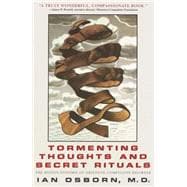
What is included with this book?
| Prologue: A Personal Perspective | p. 3 |
| Filth, Harm, Lust, and Blasphemy | p. 10 |
| Diagnosing OCD | p. 29 |
| Who Gets OCD? | p. 52 |
| OCD's Best Treatment: Behavior Therapy | p. 68 |
| Using Medications | p. 93 |
| The Lessons of Group: Ten Strategies for Coping with OCD | p. 114 |
| OCD in the Family | p. 137 |
| Making Sense of Senseless Symptoms | p. 160 |
| OCD as a Brain Disorder | p. 177 |
| From Hypochondriasis to Sexual Addictions: Obsessive-Compulsive Spectrum Disorders | p. 192 |
| Spiritual Directors and Greek Doctors: A Historical Perspective on OCD Treatment | p. 210 |
| The Yale-Brown Obsessive-Compulsive Scale | p. 233 |
| The DSM-IV Diagnostic Criteria for OCD | p. 237 |
| App. C: Suggested Readings | p. 240 |
| Where to Find Help | p. 243 |
| Acknowledgments | p. 311 |
| Index | p. 313 |
| Table of Contents provided by Blackwell. All Rights Reserved. |
The New copy of this book will include any supplemental materials advertised. Please check the title of the book to determine if it should include any access cards, study guides, lab manuals, CDs, etc.
The Used, Rental and eBook copies of this book are not guaranteed to include any supplemental materials. Typically, only the book itself is included. This is true even if the title states it includes any access cards, study guides, lab manuals, CDs, etc.
Excerpted from Tormenting Thoughts and Secret Rituals: The Hidden Epidemic of Obsessive-Compulsive Disorder by Ian Osborn
All rights reserved by the original copyright owners. Excerpts are provided for display purposes only and may not be reproduced, reprinted or distributed without the written permission of the publisher.